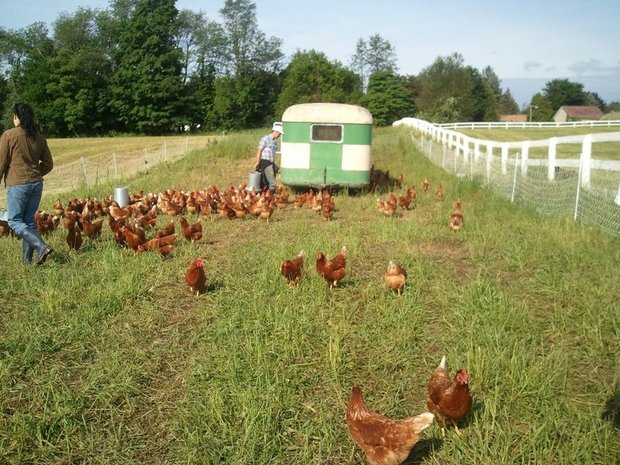I often think about the struggles young and beginning farmers face accessing the adequate land and capital required to farm. The recently released survey Building A Future With Farmers from the National Young Farmer's Coalition confirms that these are the two biggest hurdles to new farmer growth. “Lack of Capital” and “Land Access” (78% and 68% of respondents) are far and away the most limiting factors for aspiring farmers, with “Healthcare” coming in a distant third (47%).
The survey proposes a number of policy recommendations, which are very much needed, but will take substantial time and effort before making an impact on the current system. Young farmers faced with an increasingly dismal fiscal situation in the U.S. might not be able to hold their breath that long. So how do young and beginning farmers to take action NOW using the tools available today?
5 Ways to Start Farming NOW
1.) Settle for “less than perfect”.
Settling is never fun for anyone. Why should I have to settle? Well, if that’s the hand you’re dealt then there’s no way around it. Plenty of cheap land still exists in small parcels in less than ideal locations around the country. In our search we’ve seen land for under $2,000 per acre, including the land we’re hoping to buy. It’s not the greatest land on earth, but it fits our budget and we’re willing to put in the effort to make it work. It also wasn’t easy to find. We searched and searched for over 9 months and had various deals and arrangements fall through. I think we were lucky to find it in that time frame; we were prepared to wait much longer. Persistence pays.
2.) Get your feet on the street.
2.) Get your feet on the street.
If buying land (even cheap land) isn’t an option get out there and find a place to lease. If you see vacant land that you think might work track down the people that own it and write them a letter. Or just stop by and introduce yourself and present your vision for the land. There’s plenty of vacant land that could benefit from the tax breaks associated with agricultural development and lots of landowners "wished" they'd do more with what they have. Joel Salatin wrote an article recently describing an inmate who found four landowners willing to let the inmate farm their land upon release. A scrappy beginning farmer could get similar results. These people won’t come to you. You must seek them out.
3.) Finance the farm with an outside job.
3.) Finance the farm with an outside job.
This is a tough pill to swallow. Land is valuable. So is the equipment to farm it. It’s a rare occasion when either the land or the equipment can be found for very cheap, or financed easily. One way to get around this issue is to use another stream of income to finance it. All too many farmers already know the truth of that reality, including many beginning farmers. The structure of the farming industry perpetuates that reality (fragmented supplier base selling commodity products) and economic growth and development of competitive industries (retail/housing development) only adds fuel to the fire. The barrier to farming entry can be quite high from a capital perspective and one way to knock it down is to transfer wealth from one industry to another. That’s our approach and it isn’t easy. Not a fun way to get out of bed every morning, but there is a light at the end of the tunnel and that makes it a bit more tolerable.
4.) Use land linking programs.
4.) Use land linking programs.
Center for Rural Affairs provides an excellent start on its Land Link Services site. New England, Vermont, New Mexico, Montana and many other states and regions offer land linking services as well. We used a couple of them and had good results. Ultimately, the offers we came across would have been fine, but we chose a different path. The Land Link sites appeared highly underutilized in my experience (by both existing and wannabe farmers).
5.) Build equity where you are working.
5.) Build equity where you are working.
Commit to a long-term partnership and structure an agreement where you can build ownership in a farm over the duration of your tenure. These types of arrangements are highly prevalent on New Zealand dairy farms and they could easily work in the U.S., especially given the aging farmer demographics. I’ve come across multiple such listings in the U.S. since we’ve been looking, so I know there’s a few out there. If you can't find one in your area find an aging farmer and make a proposal. You could take a load of work off their shoulders and provide assurance that the land won't be subdivided and sold when they're gone. It’s a great way to build ownership with little or no capital commitment up-front. Sweat equity.
Get creative. The suggestions above are only scratching the surface. You can make it happen.
Get creative. The suggestions above are only scratching the surface. You can make it happen.


